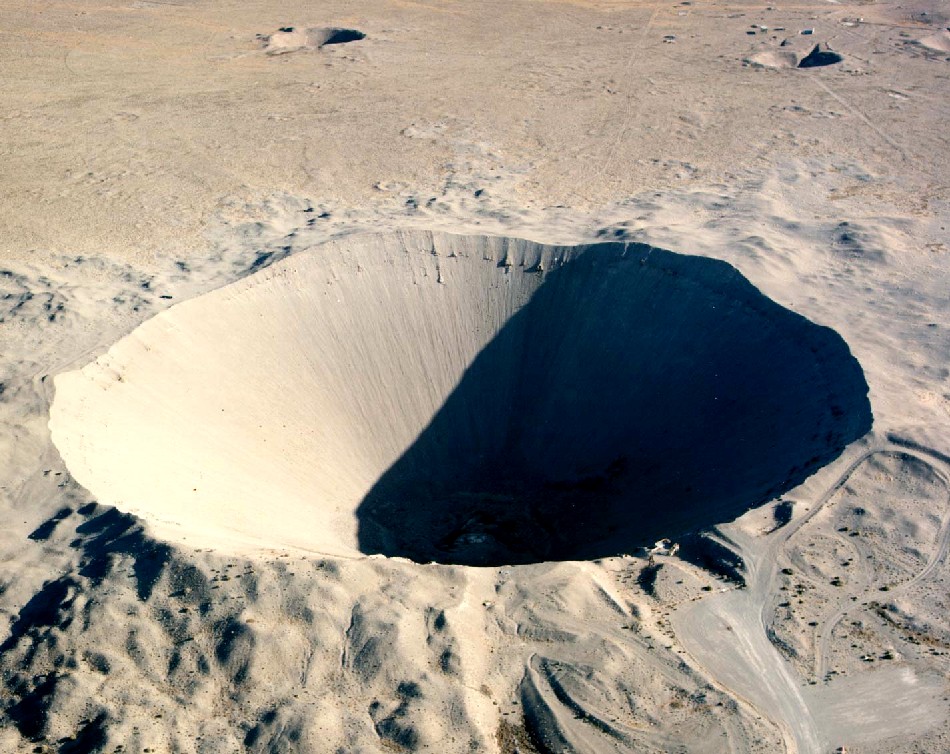
The Sedan Crater in the Nevada Test Site

The Sedan Crater in the Nevada Test Site
In the figure: Sedan Crater was formed when a 100 kt explosive buried under 635 feet of desert alluvium,
containing 7 percent of water, was fired
at the NTS on July 6, 1962, displacing 12 million tons of earth. The crater is 320 feet deep and 1,280 feet in diameter
(Photo courtesy of National Nuclear Security Administration / Nevada Site Office).
Similarly, the US department of the Navy has estimated that if a 1-Megaton weapon were dropped from the air and penetrated
underground in sandy soil to a depth of 50 feet before exploding, the resulting crater would be about 300 feet deep and
nearly 1400 feet across.
Many characteristics of a meteorite "soft" impact can be compared with those of an underground nuclear explosion in which
the impactor’s energy is mainly transferred to the ground with limited air-blast effects in surroundings.
We report here some statements about underground nuclear explosions by Glasstone and Dolan in their book published by the US
Department of Defense: "2.95 The fraction of the energy imparted to the air in the form of blast depends primarily on the depth
of burst for the given total energy yield. The greater the depth of burst, the smaller, in general, will be the proportion
of shock energy that escapes into the air." "2.99 As a general rule, the thermal radiation is almost completely absorbed
by the ground material" "6.11 If the soil is saturated and the high water table is maintained after the detonation, the crater dimensions
will change with time. Slumping of the crater sides will continue until a stable condition exists for the material."